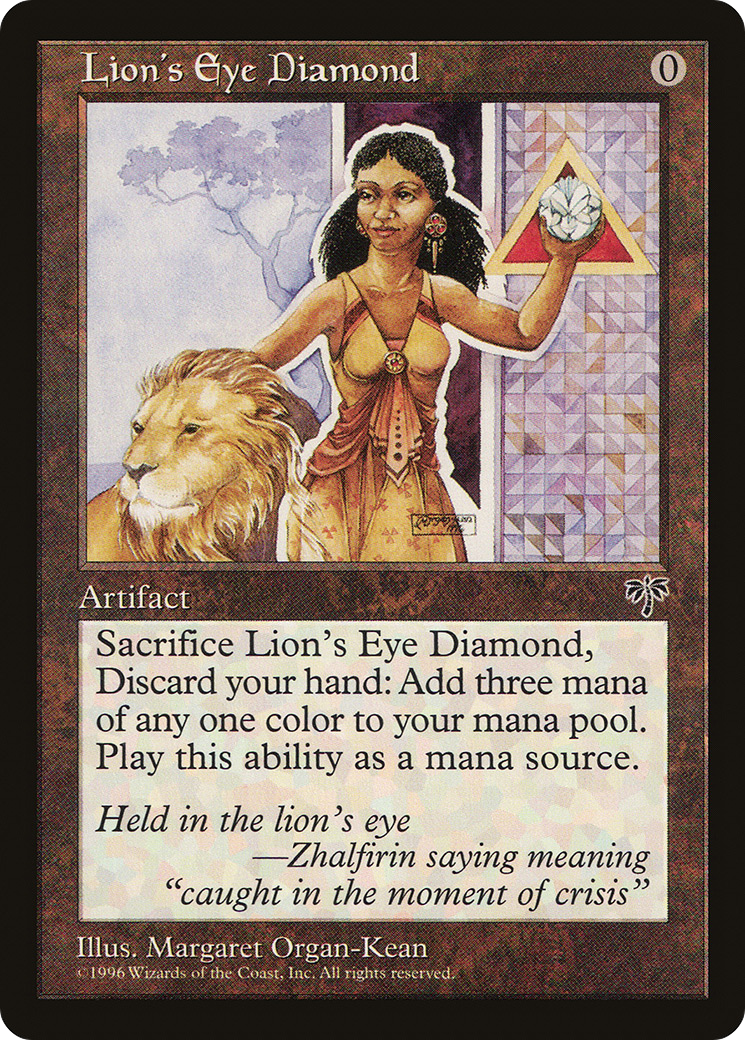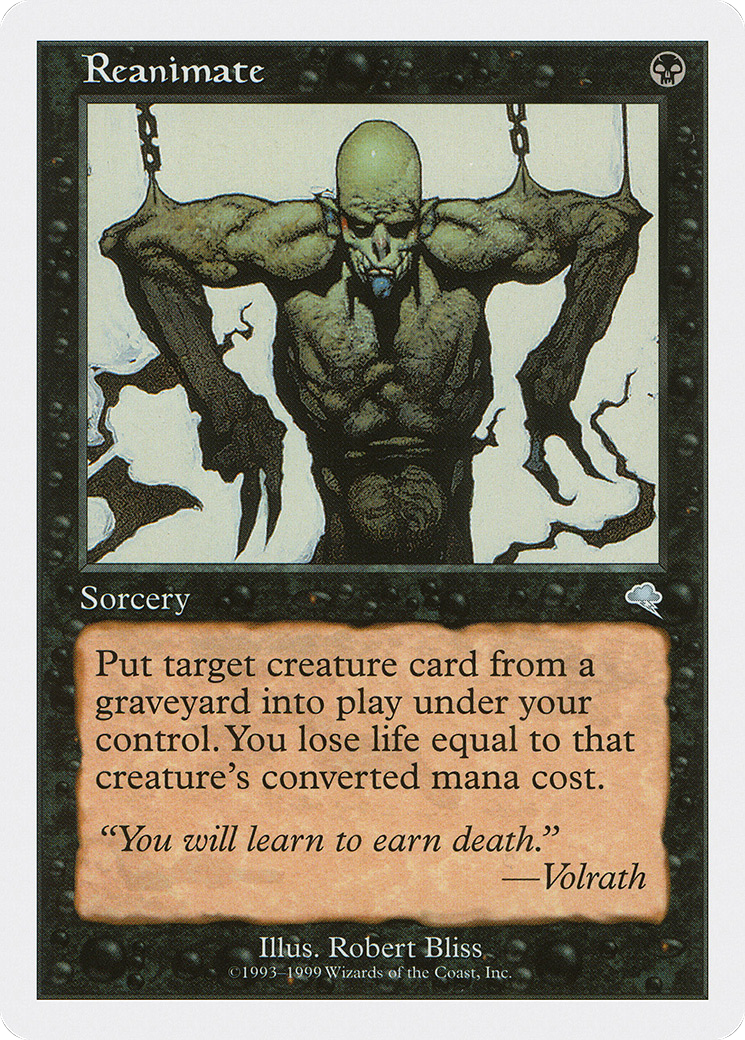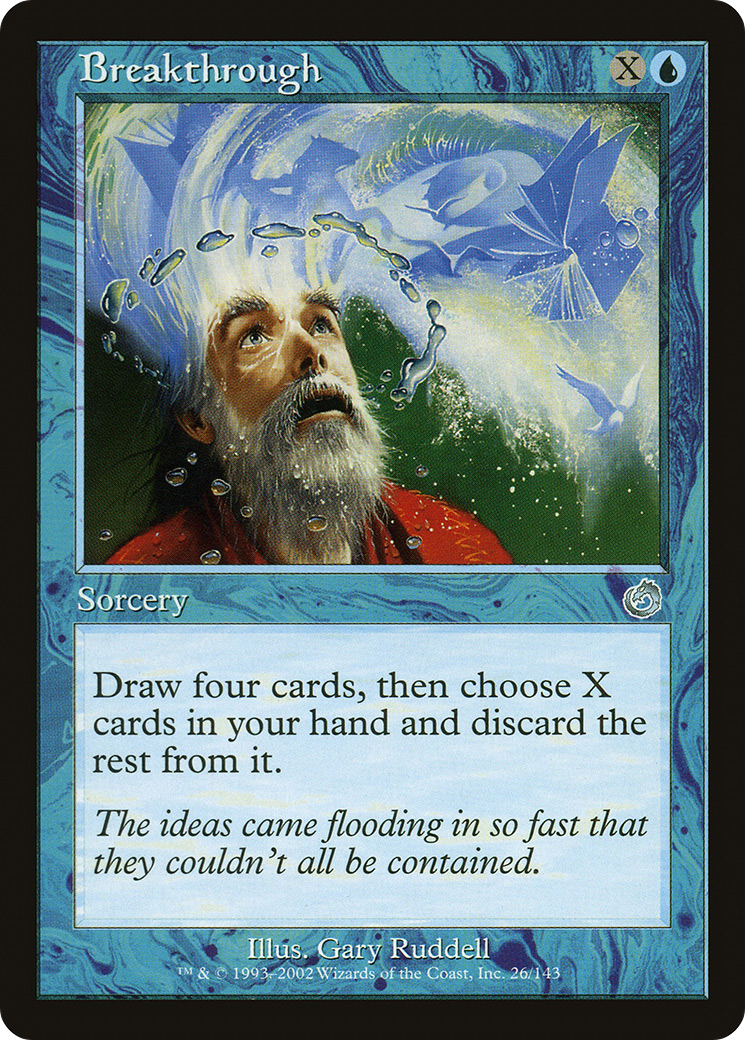Premodern Dredge: Theorycrafting
Looking to the past for new beginnings
If you were like me, you probably remember a time when Magic was played without sleeves on our friend's kitchen table, bedroom floor, or cafeteria lunch table. This was a time before Planeswalkers plagued our board states and forced our spells and creatures to play on new axes of attack. Now, game developers are tasked with balancing Planeswalkers, and this has led to a massive implication on the force creatures must play in a game state. No longer can a single spell carry the weight of our turn, a creature with the ability of that spell tacked onto it must be the forward design.
Now, let me introduce you to the wonderful format of Premodern. What drew me to this format was my disillusion with Legacy and other eternal formats. For more information on the format check out the community ran page Premodernmagic. This format plays a host of powerful creatures still, but most come with drawbacks and deckbuilding considerations. We also have a wide array of game altering enchantments that deckbuilders must keep in mind when theorycrafting and constructing new brews. We also have some of the most powerful spells at our disposal, minus some key notables.
However, what really drew me to this format was deckbuilding and theorycrafting that reminded me of when I was a kid first learning how to play in 2000. The first deck I ever built was a collection of G/R Beasts with Krosan Cloudscraper and plethora of other over cost cards. I though bigger creatures with equally big enchantments was the way to play, until I ran into my friend's U/W control deck using Magreta the Lion, or my other friend's Elf deck that efficiently swarmed the board at a rate my beasts couldn't keep up with.
Theorycrafting
Without further ado, I present todays Premodern theorycraft: LED Zeppelin
This is my take on a Premodern dredge archetype, even though the keyword dredge has yet to be printed in this flashback format, we can still play with the essence of graveyard shenanigans. LED Zeppelin has many interesting lines of play using a combination of Lion's Eye Diamond (LED), Cephalid coliseum, and Breakthrough. The goal like any graveyard strategy is to fill our graveyard with as many creatures as we can and then have the recur each turn onto the battlefield. The interesting thing you may have noticed is the inclusion of Burning Wish and Akroma. Obviously Akroma can be substituted for a wide variety of creatures depending on local or global meta, however, it fills a good placeholder for the time being. The idea behind Burning Wish is to play primarily with LED giving us access to a number of answers to grave hate and alternate lines of play. We can also use Burning Wish on it's own against control decks and in games where we need to grind.
Dredge finds itself bridging the gap between combo and aggro, meaning we want to play fast, however, we don't necessarily rely on our "combo". If we find ourself playing against a midrange, aggro tempo, or control deck we can play slow and methodical. When we find ourselves sitting across from combo or another fast deck trying to close out the game, we can step on the pedal and dump our hand into the graveyard and begin recurring.
My theory specifically for a reanimate package is to play around Sleigh and in corner cases Parfait. Protection from red and black is nice to help blank a deck like Sleigh that is trying to close out the game quickly that can contest with our creature suite. Parfait puts up an interesting challenge, where we're not worried about Land Tax as we try to put as few lands into play as possible, we're genuinely worried about Oath of Druids sticking on the board and they begin clearing our board with Shard Phoenix and gaining life with Ancestor's Chosen.
U/x stiflenaught is an interesting matchup, we care less about the reanimate package and don't necessarily care about our show and tell package out of the sideboard. What we do want to focus on in the matchup is explosive starts where we can clog the board turn after turn and use our discard to strip Dreadnaught out of our opponents hand. We don't care as much about counter magic and Daze, as we can continue to cast our creatures from the grave.
Lines of play
The line of play we would want for this theory is to cast Burning Wish with LED on the field, holding priority with Burning Wish on the stack, we want to crack LED which pitches our Akroma to the graveyard. Then we want to search our sideboard for Reanimate, and presto we have an Akroma on the battlefield.
You may be glancing across the sideboard and wondering what I was thinking with Show and Tell and Living Wish. Well, in the off chance we don't have an LED or have used it already in a control matchup, we may find ourselves top decking Burning Wish and wanting to go grab Living Wish to acquire a creature or land to face our challenge. We can also find ourselves in a spot where we may have a large creature in hand, no LED or way to get it into the graveyard, and with the few lands we play no way to cast it. So, what can we do, Burning Wish for Show and Tell to windmill slam out creature down.
We have many lines and angles we can play using Putrid Imp, Zombie Infestation, Squee, Etc. Even though our opponents will want to exile our graveyard, we have play patterns that can get around this, and different angles of attack. In all games we play, we will be the aggressor, almost never do we want to let off the gas. As mentioned previously, the only time we want to conserve resources and force our opponent to burn resources is in the control matchup. We don't want our entire graveyard exiled, so we put a slow drip into our graveyard.
We can use a combination of LED, Breakthrough/Tolarian Winds, and Cephalid Coliseum to fill our graveyard quickly. Turn one you want to lead with a Careful Study, Cabal Therapy, or Putrid Imp. On the second turn is where we turn on the burners, start by playing Cephalid Coliseum. Play out your LED and then cast Breakthrough holding priority. This will dump the cards in our hand into the graveyard from LED, and then Breakthrough will resolve putting four more cards into the graveyard. Then we have chosen U/U/U from LED, we activate Cephalid Coliseum as threshold is now active, putting three additional cards into the graveyard. Important to note, when you can put multiple cards into the graveyard at once, you get to decide the order. Make sure that Ashen Ghoul and Nether Shadow are near the bottom. You may also chose to play Nether Spirit in place of Ashen Ghoul or Nether Shadow.
We can also play with lines involving Zombie Infestation and Squee, Goblin Nabob. Depending on the matchup, we will either want to make as many zombies as possible, or we want to have at least two zombies ready to attack each turn. Remember, this deck does not want to be defending most of the time, if we are on the back foot, we are most likely losing or playing towards a reanimate line.
Conclusion
Dredge is a powerful strategy that has seen play in countless formats. There's no one true correct way to play any graveyard strategy, and the focus should change depending on what your opponent is on. The numbers are interchangeable, and this theorycraft is still very much a work in progress. Most people avoid playing Lion's Eye Diamond and Burning Wish all together and include more creatures or more discard. Either way your opponents will be racing to find an answer to your deck, and hoping you go crashing down like a lead zeppelin. Check out my Moxfield page to see how I'm updating Dredge and any other decks I'm theorycrafting. Until next time!










Comments
Post a Comment